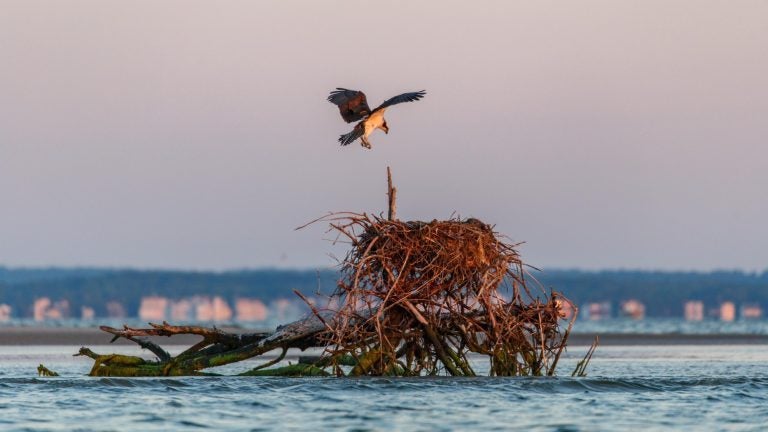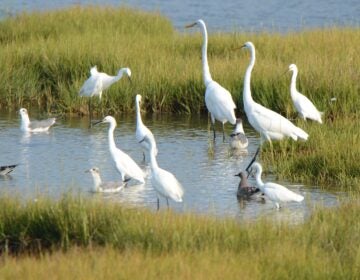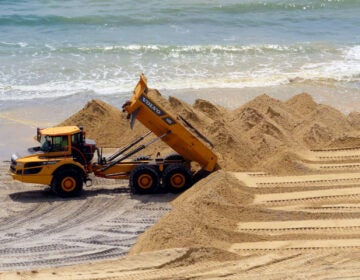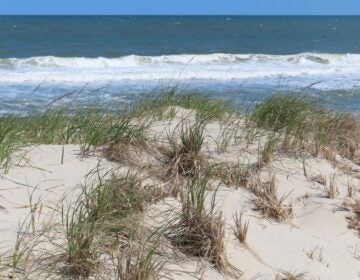17-year-old osprey, one of N.J.’s oldest, still mates, raises young
One of the oldest living ospreys ever recorded in New Jersey returned to his bayside home to nest and roost.

An osprey prepares to land on a natural nest in the Barnegat Bay. (Conserve Wildlife Foundation of New Jersey)
One of the oldest living ospreys ever recorded as nesting in New Jersey returned to his bayside home to nest and roost.
The bird, which has not been named, is 17 and still has a mate and raises young. The osprey life expectancy is eight to 10 years.
The raptor was banded as a hatchling in July 2001 in a nest about five miles from its current nesting site in Maurice River Township in Cumberland County, which borders prime fishing grounds in the Delaware Bay.
Ospreys typically begin arriving in the New Jersey area from their wintering groups in Central America, northern South America, and the Caribbean in March. But they were once in danger of extinction in New Jersey. But since the early 1970s, when pesticides and habitat loss almost eradicated the birds, the raptors that have staged a miraculous comeback in the state.
And the population is growing. In 2017, there were 668 active osprey nests in New Jersey, according to the Conserve Wildlife Foundation of New Jersey’s Osprey Report.
That’s up from 515 in 2016. In 2017, researchers determined the outcome of 519 nesting pairs, which produced 892 young ospreys, the most ever recorded in the project’s history.
Ospreys are typically seen hunting for fish by hovering over tidal waterways, diving downward with talons extended when they spot prey.
[Related: In Barnegat Bay’s Sedge Islands, ospreys reign]
“Ospreys are an important indicator of the health of our coastal ecosystems, so it is important to track the health of their population. Their continuing recovery is a very promising sign for our estuaries and the fish and other wildlife that depend on clean water to survive,” said CWF Executive Director David Wheeler.
“Today, no visit to a coastal waterfront would be the same without the magnificent sighting of an osprey soaring above or crashing down to the water’s surface for a fish,” he said.
The Associated Press contributed to this report.
WHYY is your source for fact-based, in-depth journalism and information. As a nonprofit organization, we rely on financial support from readers like you. Please give today.




